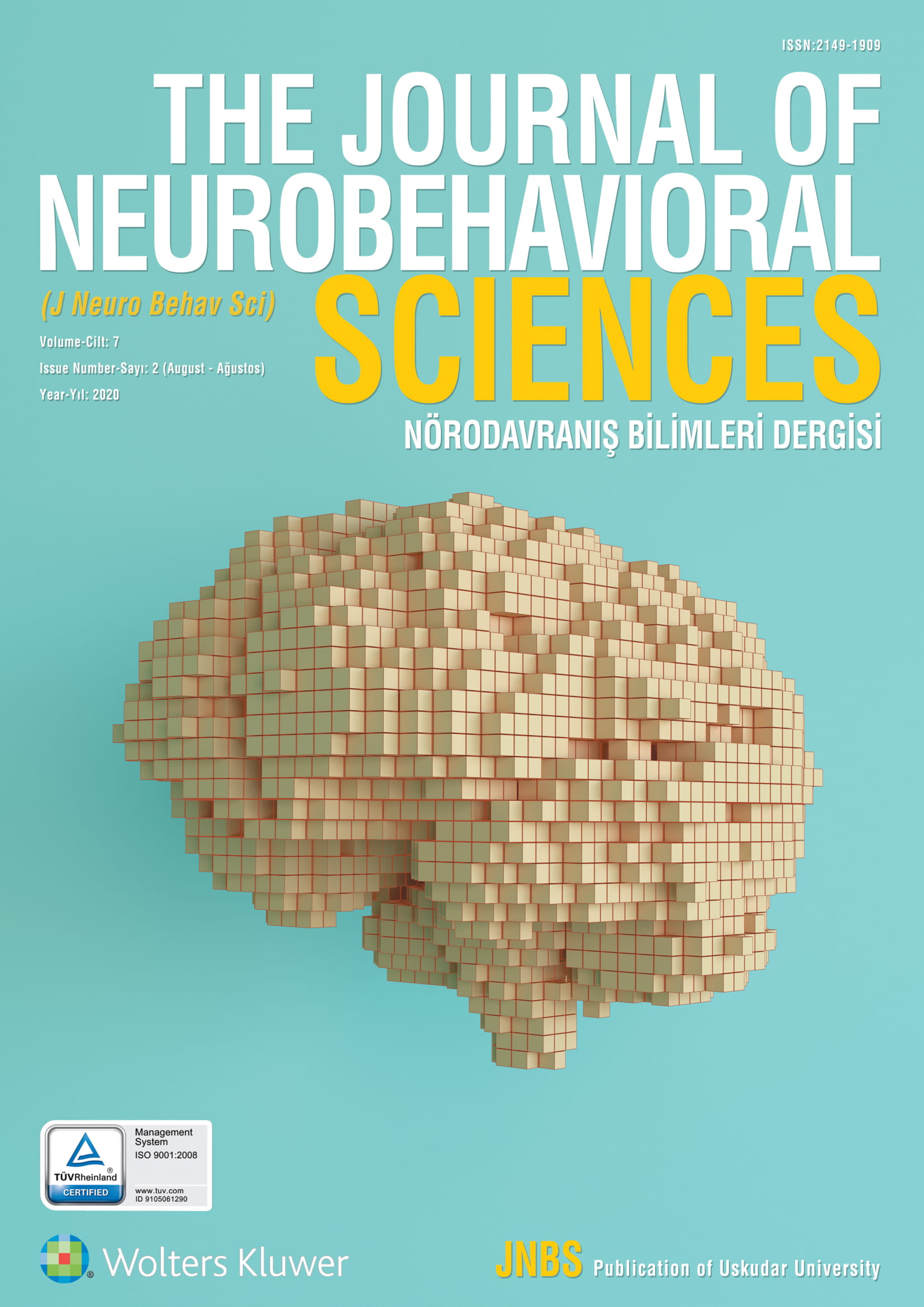
The Journal of Neurobehavioral Sciences
Yazarlar: Uslu Umay, Erensoy Habib, Meterelliyoz Kumru Şenyaşar, Aytaç Hasan Mervan, Berkol Tonguç Demir
Konular:-
DOI:10.4103/JNBS.JNBS_7_20
Anahtar Kelimeler:-
Özet: In this study, we compared the levels of alexithymia in healthy individuals with OCD patients and investigated whether there is a significant difference between them. Furthermore, some of the sociodemographic characteristics of the subjects were also examined to determine whether they had an effect on OCD and alexithymia levels. 40 volunteer OCD patients, 25 of whom were women and 15 men, aged 18-45 years, who were diagnosed at the NP Feneryolu Medical Center of Üsküdar University, Istanbul, and who were randomly selected and living in Istanbul, 40 volunteer healthy individuals, 25 of whom are women and 15 of whom are men and whose ages are between 18 and 45, are attended to this study. Participants were first informed about the privacy of work and personal information. “Sociodemographic Data Form, Toronto Alexithymia Scale (TAS-20) and Yale-Brown Obsessive Compulsive Scale and Symptom List (Y-BOCS)” were applied to all 80 participants in order to collect the data obtained in the study. The data obtained from these scales were subjected to statistical analysis with the SSPS v.21 (Statistical Package for Social Sciences) program. The normality distribution of continuous variables was evaluated according to the occurrence of Skewness-Kurtosis values in the range of -1.5 and +1.5. An independent sample t-test was conducted to compare the scores of healthy controls and OCD patients. Independent sample Mann Whintey U test was performed among the groups in terms of demographic variables. Correlation values between the scores obtained from the scales were analyzed by Pearson correlation analysis because the scores were normally distributed. According to the results of this study; a significant difference was found between the levels of alexithymia of healthy individu als and OCD patients. The levels of alexithymia in OCD patients were significantly higher than those of healthy individuals. Apart from this, there was a significant positive correlation between the difficulty describing feelings scores of OCD patients and the their difficulty identifying feelings scores of the TAS-20 subscales. In addition, a number of suggestions have been added in order to make contribution to the literature of this research which is also included in similar studies.